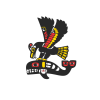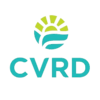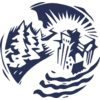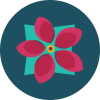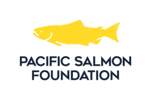Peter Rusland, Cowichan News Leader Pictorial, Sep 26, 2014
 The sewage outfall for the greater Duncan area will likely move from the Cowichan River to a spot south of Salt Spring Island within the next 10 years.
The sewage outfall for the greater Duncan area will likely move from the Cowichan River to a spot south of Salt Spring Island within the next 10 years.
Shifting the treated-sewage pipe — tentatively to Satellite Channel on a route still to be determined — is a commitment the North Cowichan/Duncan Joint Utilities Board made in its 49-year lease with Cowichan Tribes.
Estimated at $22 million, the project is expected to shield shellfish and Aboriginal bathing waters near the current outfall, North Cowichan officials say.
Pollution impacts from the current outfall — carrying chlorine-treated offal from the Joint Utilities Board’s Tzouhalem Road lagoons — are especially heavy during summer-drought low flows, Mayor Jon Lefebure noted.
“We are currently working with the Cowichan Valley Regional District to amend the Central Sector Liquid Waste Management Plan, “North Cowichan municipal engineering manager John MacKay said. “We are also out for proposals to hire an engineering consultant to do detailed oceanographic and routing studies for this amendment.”
MacKay explained the change is expected by June 2015, in time to apply for a federal infrastructure grant to cover two-thirds of the cost.
Outfall-project grants could become crucial to curb tax hikes feared by folks complaining of rising levies to cover what Councillor Al Siebring called “fairly major capital projects coming down the pipeline.”
“Council should do a true priority-setting exercise to identify low-priority items, which might be subject to spending cuts, or even possible elimination,” Siebring says in a post at cowichannewsleader.com.
Lefebure said the current liquid-waste plan calls for moving the river’s outfall within the next 16 years, “six years having passed already.” He downplayed suggestions the project would simply shift contamination.
“We have very good treatment at the lagoons, with aeration then alum added, which makes it tertiary (three-stage) treatment,” he said. “We’re better than the (senior government) standards required, but when (waste water) goes into the river it adds nutrients, and there’s an unwanted impact on the river — the long-term goal is to get that outfall out of the river.
“With a pipeline into Satellite Channel, there’s a huge cleansing action of tides down Sansum Narrows, so it’s a much safer place to discharge.”
While Tribes and local conservationists aim to reopen shellfish harvesting in Cowichan Bay by 2020, Lefebure signalled the river’s contamination culprit isn’t the JUB outfall, but Koksilah farm runoff reaching the bay.
“The current source that contaminates shellfish comes from fecal (waste) from farms up the Koksilah River, that mixes with the Cowichan River.”
David Slade and Rodger Hunter of the Cowichan Watershed Board have identified 20 offending farms on the Koksilah and approached them to develop a group best-practices plan as to when they spread manure, said Lefebure.
“We hope this is the next step that leads to harvesting shellfish in the bay in future.”
The mayor dismissed the idea of further treating lagoons’ waste to drinking-water standards, to dodge the outfall move.
“We’re significantly above standards we’re required to meet. You could spend huge amounts of money to make small (treatment) improvements.”
 Email
Email